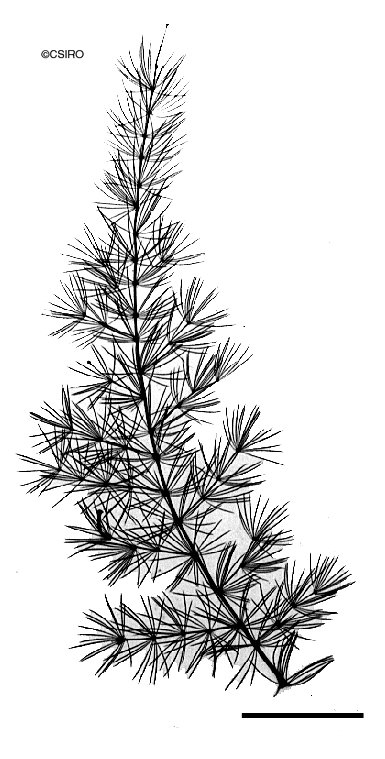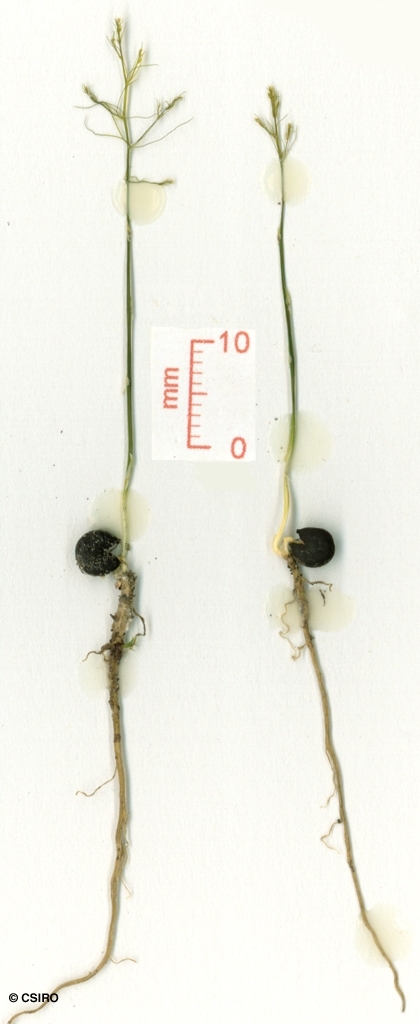Australian Tropical Rainforest Plants - Online edition
Asparagus plumosus Baker




Baker, J.G. (1875) Journal of the Linnean Society, Botany 14 : 613. Type: South Africa; syn: Port Natal, J. F. Drege 4482; K; British Kaffraria, Cooper 202; K; Durban; Gerrard & Mken 754; TCD.
Ferny Asparagus; Climbing Asparagus Fern
A slender vine not exceeding a stem diameter of 2 cm.
About 4 or 5 translucent cataphylls produced before the first linear-filiform, green cladode. The first true green leaves (actually cladodes) appear as a pair in the axil of the translucent cataphyll. At the tenth leaf stage: leaves, i.e. cladodes, produced in clusters of 5-8. Cladodes linear-filiform, without venation. Cataphylls or bracts are produced at each major branch among the cladodes. Cladodes variable in length but commonly about 7-8 mm long. Seed germination time 184 days.
An introduced species originally from southern Africa, now naturalised in NEQ, CEQ and southwards to New South Wales and South Australia. Altitudinal range in NEQ from near sea level to 800 m. Usually grows near settlements or in old gardens but also on rain forest edges or in disturbed areas in rain forest.
This commonly cultivated plant has now escaped and can be found over a wide range in various habitats. Seed is dispersed by birds.





